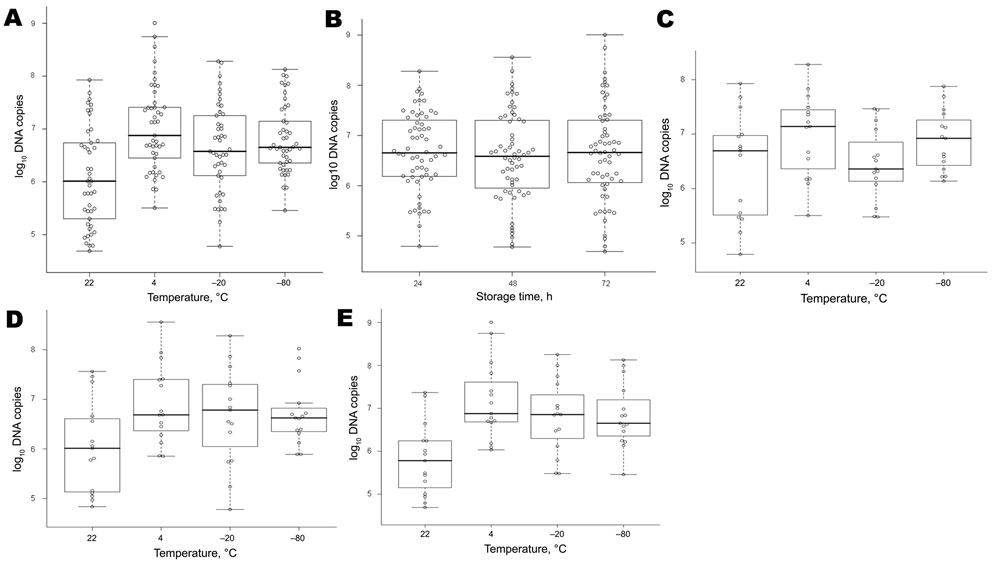Volume 17, Number 1—January 2011
Dispatch
Identification of Rickettsial Infections by Using Cutaneous Swab Specimens and PCR
Figure 2

Figure 2. Effect of temperature (A), storage time (B), and temperature and storage times (C–E) on yield of rickettsial DNA, Marseille, France. Guinea pigs (n = 3) were infected with Rickettsia conorii and inspected daily for skin lesions. After lesions appeared, 12 swab specimens/animal were obtained daily for 5 days and stored in groups of 3 at 22°C, 4°C, −20°C, or −80°C. DNA was extracted after storage for 24 h, 48 h, or 72 h at each temperature in a final volume of 100 μL, and numbers of bacterial DNA copies were quantified in 5 μL of swab DNA extracts by using quantitative PCR. Box plots indicate 25th and 75th percentiles, horizontal lines indicate medians, and error bars indicate minimum and maximum values.
Page created: July 08, 2011
Page updated: July 08, 2011
Page reviewed: July 08, 2011
The conclusions, findings, and opinions expressed by authors contributing to this journal do not necessarily reflect the official position of the U.S. Department of Health and Human Services, the Public Health Service, the Centers for Disease Control and Prevention, or the authors' affiliated institutions. Use of trade names is for identification only and does not imply endorsement by any of the groups named above.